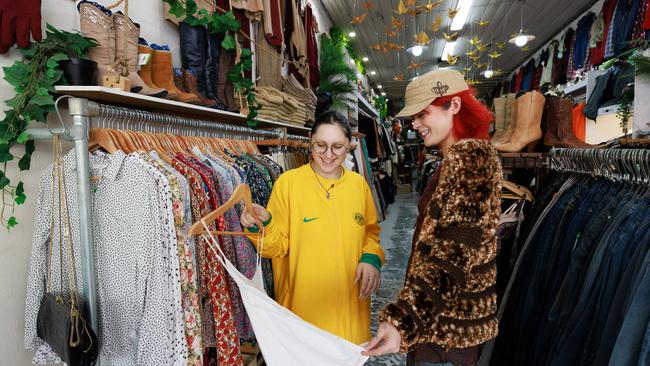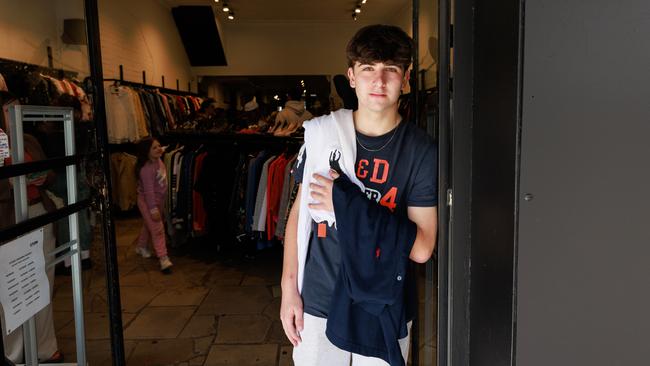Fast fashion crisis for retailers as ‘remote fitting room’ sees online returns skyrocket
Fast fashion has become a bigger problem for retailers than Covid or the war in Ukraine. See the whopping number of clothing items Australians are sending to landfill.

NSW
Don't miss out on the headlines from NSW. Followed categories will be added to My News.
Without even realising it, young Aussies are throwing a whopping 55 million items of brand-new clothing straight in the bin each year, and clogging up both the planet and the postal service in the process.
For retailers ‘fast fashion’ has become a more pressing supply chain issue than Covid or the war in Ukraine, due to a phenomenon known as the “remote fitting room”.
With online fashion marketplaces like Shein and Temu selling new shirts, dresses, skirts and shoes for as little as $10 – and sometimes less – Millennials and Gen Z are bulk-buying garments in different sizes and styles and sending back those that are ill-fitting, or chucking them away themselves.
For those garments that are returned to the manufacturer, supply chain consultancy firm TMX Global found up to two-thirds go into landfill, with retailers unable to absorb the cost of repackaging the goods for repurchase.
Director of Supply Chain Jamie Dixon said 70 per cent of those returns are due to customers waiting to try on items for the first time at home and finding out they don’t fit, and many aren’t even aware of the environmental and economic impact.

“Due to the reliance on these ‘remote fitting rooms’, and the large number of returned items, the carbon footprint for many online purchases is potentially many times higher than if consumers bought the correct fitting item in-store,” Mr Dixon said.
“The irony here is that the younger people that are saying ‘we need to protect the environment’, they’re actually the biggest culprits.”

TMX Global’s analysis found Australians purchase an average of 17 items of clothing per person per year, and of the 347,200,000 garments bought 25 per cent are returned. Of that, 65 per cent are sent to landfill. By comparison, only 8 per cent of items bought in-store are returned.
Australian Retailers Association CEO Paul Zahra said free returns are being offered by fewer and fewer retailers, encouraging customers to think more carefully about their purchases.
“Of course, we want to maintain the convenience of online shopping, but we do need to be conscious of the environmental impact,” he said.
“Online returns are not good for business and not good for the environment.”

At Newtown Vintage 313, second-hand items are curated for the trendy inner-city market from 20 tonnes of clothing salvaged in France, Germany, the US and Japan by importer and distributor French Fripe, which supplies most of the ‘vintage’ stores on King Street.
The store’s 19-year-old sales assistants Sophia Kouroupakis and Mia Kandi-Franklin were unsurprised by how many brand new items Aussies are sending to landfill.
“I think it’s just a symptom of people’s attitude around clothes. We rework pieces, we ‘flip’ things to make them wearable for longer. If people realised the impact of throwing away clothes they would put in that little bit more effort to fix a zipper or stitch up a hole,” Mia said.

15-year-old first-time thrift shopper Noah Gers said social media was “100 per cent” responsible for his foray into Newtown’s UTURN recycled fashion store, where he picked up a pair of Ralph Lauren polos for just $44 – a fraction of the more than $200 he estimated the shirts would cost brand new.
“My mate saw it on TikTok,” he said.
“I saw some nice clothes for cheap … and I’m going to wear these – I’m not going to chuck them out in the first little while.”





